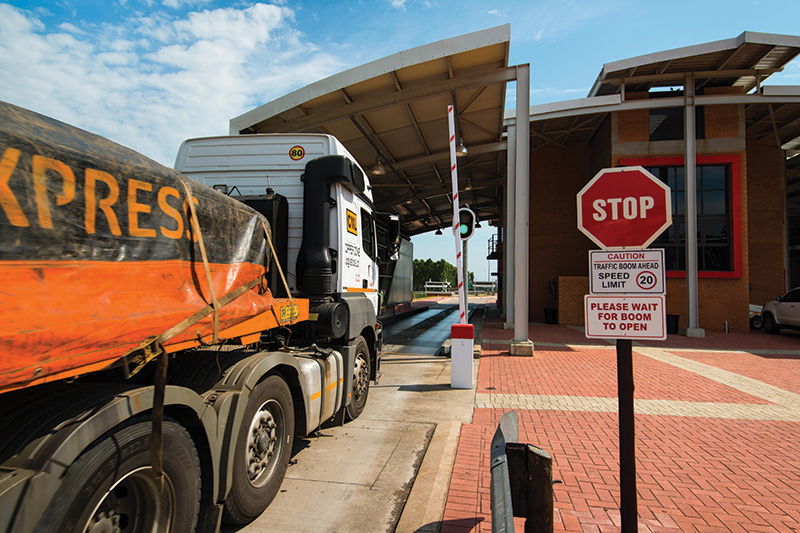Freeway Management System in Gauteng makes for less stressful travel
Travelling between Pretoria and Johannesburg has become considerably safer since the implementation of the intelligent Freeway Management System (FMS) in Gauteng over the last few years.
The FMS helps motorists plan and better navigate their way through traffic with the provision of realtime information on travel times and incidents on SANRAL freeways in the province.
Medical, mechanical and law enforcement teams can now respond to an incident in the space of between six and 18 minutes.
The FMS is active on about 251km of freeways in Gauteng and includes 10 incident response units, 10 towing recovery units, eight units for heavy recovery units and six motorcycle medical response units stationed at strategic points on the freeways. All are comprised of highly trained first responders with specialised equipment and are operational 24 hours a day.
The FMS system makes use of Intelligent Transport Systems (ITS) technologies, which involve the integrated deployment of communications technologies, traffic management software and control
devices such as closed-circuit television cameras (CCTV), variable message signs (VMS) and traffic detectors to manage and monitor the freeways.
The system feeds live footage to SANRAL’s Central Operations Centre, which allows the roads agency to improve its management of the road network continuously. Working with metro police departments and roads agencies in Tshwane, Johannesburg and Ekurhuleni, it also contributes to effective routine road maintenance, ensuring the speedy removal of road obstructions and hazards. Progress Hlahla, Northern Region
Manager (covering Gauteng, Mpumalanga, North West and Limpopo) for SANRAL, said: “Travelling between the two cities can take up to 1 hour and 30 minutes in peak morning and afternoon traffic. Our system is built for quick responses to various incidents so that users of our roads have less to worry about after a long day at work.” Commuters in Johannesburg and Pretoria spent an average of around 46 and 26 hours in congested traffic in 2017. Johannesburg motorists spend more time in bumper-to-bumper traffic than commuters in large European cities such as Berlin, Manchester and Rome.
“We understand how our roads impact the lives of ordinary South Africans and are cognisant of the fact that we need well-managed roads to meet the economic goals of our country,” said Hlahla.
In addition to saving time, the FMS also presents fuel savings for road users if they are able to factor in the real-time updated information from SANRAL’s VMS communications or on i-traffic
(i-traffic.co.za / @itrafficgp on Twitter) into their trip.
The FMS system deals with an average of 3 000 traffic-related incidents per month, with the majority of these being stationary vehicles on the freeways. Crashes make up around 15% of the total incidents on the Gauteng freeway network.
“With the success of the initial system in Gauteng, we aim to expand its existing footprint with the hope that we will make roads in the region safer,” said Hlahla.
The FMS has also been implemented in KwaZulu-Natal and the Western Cape.
Overload control facility saves roads – and lives
The Eteza Traffic Control Centre on the N2 in northern KwaZulu-Natal is helping curb the extensive overloading of trucks, which has resulted in a marked deterioration in the condition of the province’s road network.
Damage to roads as a result of overloading leads to higher maintenance and repair costs and shortens the life of a road. This in turn places an additional burden on the state, as well as law-abiding road users – who ultimately carry the cost of careless and inconsiderate overloading. At the overload control facility at Eteza, heavy vehicles of more than five tons gross mass are weighed. Drivers of heavy vehicles are issued a fine if the vehicle exceeds the permissible mass on gross mass and/or axle unit mass. The overload control facility is also used to inspect the roadworthiness of vehicles on a 24-hour basis.
Behind a large screen in the control room, Samkelisiwe Ndebele watches trucks awaiting their turn on the weighin scale.Satisfied that the next truck is now ready to be weighed, she speaks into the microphone: “Driver, please move forward.”
The truck roars forward and stops on the scale where Samkelisiwe and colleagues have an unobstructed view through a large glass window. Once she is satisfied with the reading on the computer, she clears the truck to proceed. This is one of the main duties performed at the centre, which processes an average of 200 trucks each day.
“Weighing the trucks helps the community at large by taking overloaded trucks off the roads, as they often are the cause of crashes. That is how we are trying to limit the problem that we are faced with,” said Samkelisiwe. Peter Phiri, a truck driver bound for Johannesburg

from Richards Bay, said: “The facility at Eteza ensures that we comply and carry the permissible load. I don’t have any problem with the service here. They are quick to take your particulars and weigh your truck.”David Makhoba, manager of the traffic control centre, which employs 23 people, said that apart from weighing trucks, the roadworthiness of vehicles is also checked.
Steven Sipho Nkosi, superintendent of the traffic police in Mtubatuba, said they worked closely with the Eteza traffic control centre to help enforce the law on the roads,
particularly on the busy N2. “The common offences are speeding, drunken driving, and operating unroadworthy and unlicensed motor vehicles,” he said.
“The traffic centre has helped to reduce overloading of vehicles, which damages the roads. The humps on the roads caused by overloading can lead to crashes, because people lose control of their vehicles due to the bad road conditions.”